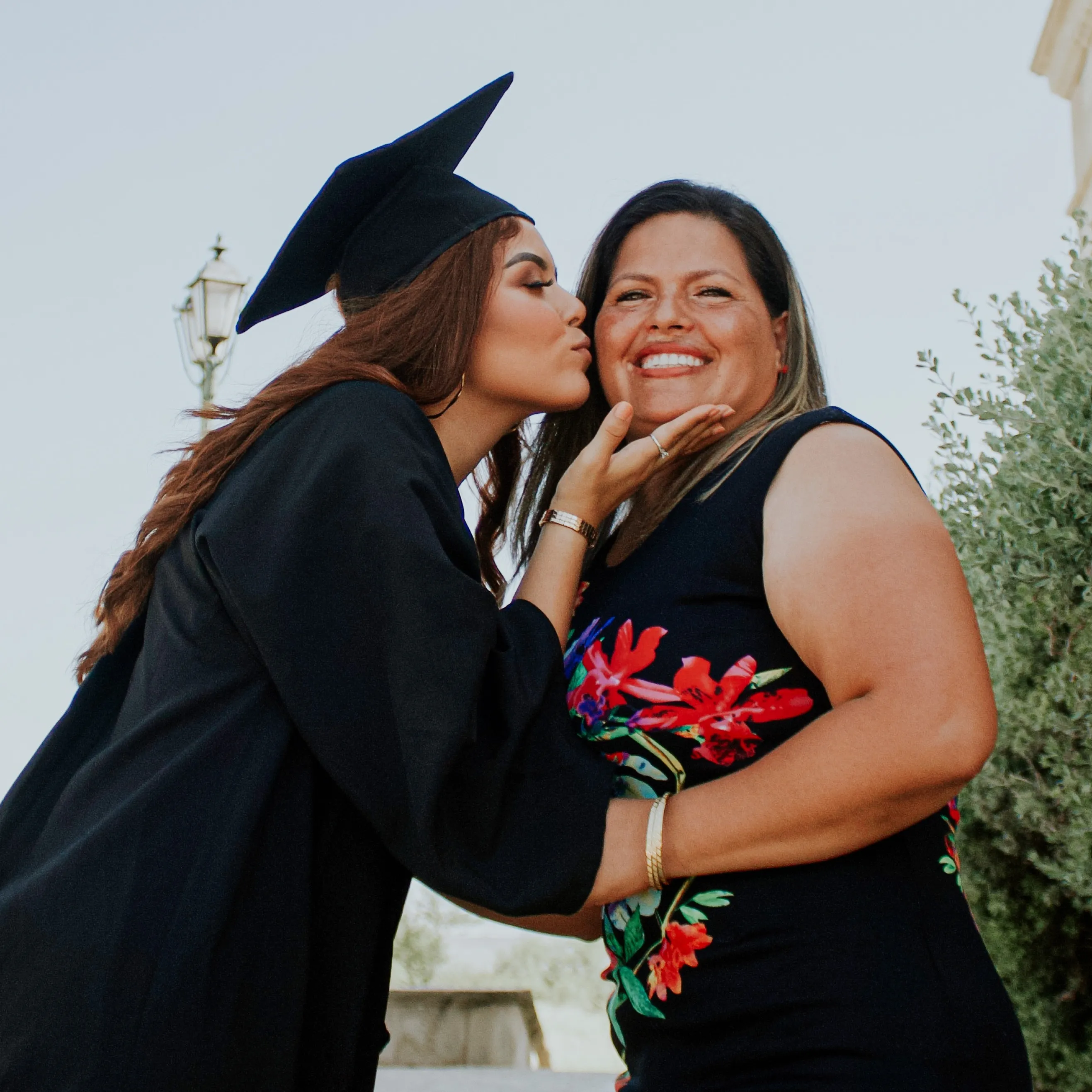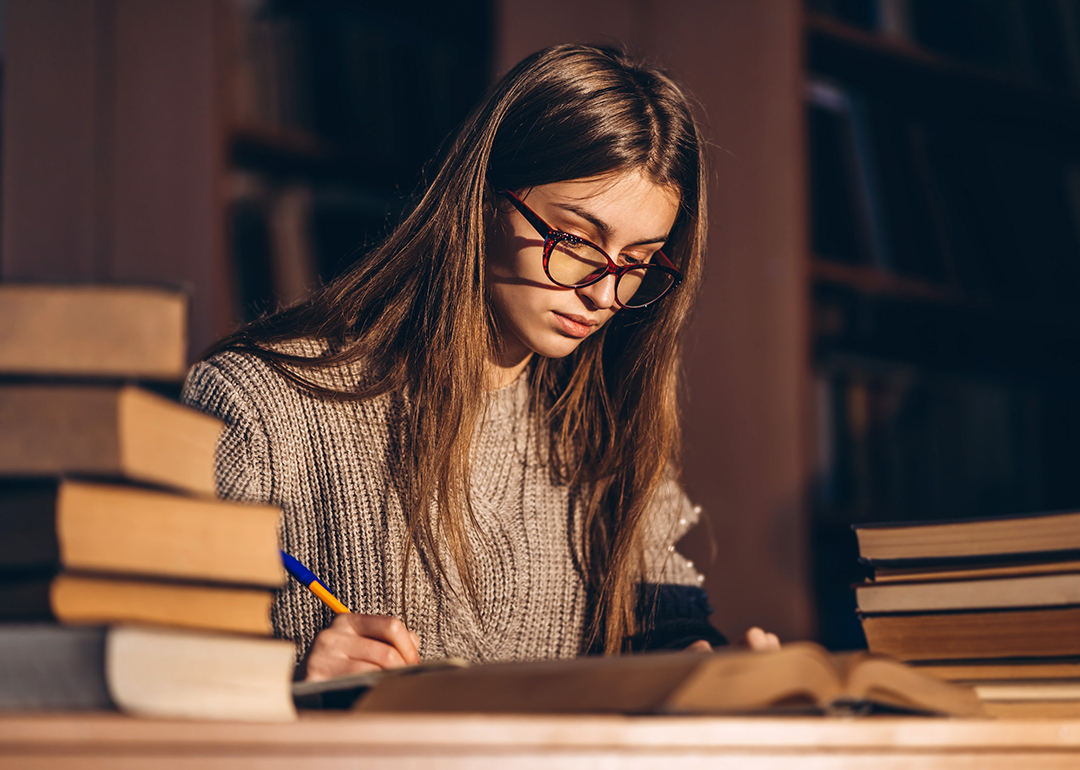Conversations surrounding education have only grown more crucial. After dealing with a year of virtual learning, schools and families are doing their best to play catch up. What is the one topic that has come up most often amid this conversation? Class size.
Classroom size is used most often in terms of the 'student-teacher ratios.' But these two terms are completely different, not just by definition but also in providing ways to analyze a student's classroom experience.
To help you better understand the importance of smaller classes, lower student-teacher ratios, and what these numbers mean for your child, this guide decodes these popular education terms and what it means for your child's learning.
Student to Teacher Ratios: At A Glance
- What is 'Student-Teacher’ Ratio? This term measures the number of students for every teacher employed by the school (Public School Review).
- What Is the Average Student-Teacher Ratio in the United States? The average student-to-faculty ratio in U.S. public schools is 15.3 students per teacher (Brookings Institute).
- What is the Average Classroom Size in Elementary Schools? The average class size in elementary schools is 20.9 students (Brookings Institute).
- What are the Benefits of Smaller Class Sizes? The benefits of smaller classes in grades K-3 often lead to higher levels of academic achievement and improved gains for low-income and minority students (Lydian Academy).
- How to Supplement Your Child's Education at Home? Providing your child with a regular schedule, encouraging curiosity and learning, and creating a healthy homework environment are some of the many ways to support your child's education from your home.
What is the 'Student-Teacher’ Ratio?
The Glossary of Education Reform provides one of the most widely used definitions of the 'student-teacher' ratio. Defined as the number of students at a school per full-time teacher, this measurement helps evaluate each teacher's workload and resource allocation. In recent years, this ratio is closely correlated to evaluating the individual attention each student receives.
When you hear about an 18:1 student-teacher ratio, you know that there is one teacher for every 18 students enrolled at the school. And remember to keep this specific 18:1 ratio in mind—research suggests that this is also the ideal size for academic success and long-term achievement (Public School Review).
How Was Student Performance Affected by COVID-19?
When 2020 hit, so too did an unprecedented decline in student performance. Though virtual learning eventually ended, signs of the COVID-19 pandemic is still present in classrooms. COVID-19 spurred a wave of severe faculty shortages, higher than average student-teacher ratios, high rates of absent students, spikes in mental health challenges and misbehavior, and declining student achievement, especially for students from low-income households (Brookings Institute).
During this time, the education industry saw rapid growth in virtual learning services like Learner. In recent years, these online tutoring platforms provided supplemental one-on-one education that students have been missing. And it's clear that online tutoring isn't going anywhere; a recent study predicted that online tutoring will grow by $182.32 billion by 2026 (Technavio).
What Is the Average Student-Teacher Ratio in the United States?
The average student-teacher ratio in U.S. public schools is 15.3:1 (Brookings Institute). However, this ratio varies widely from state to state. California has one of the highest student-teacher ratios, with 22:1. On the opposite end of the spectrum is Maine, with one of the lowest ratios of 11:1 (Public School Review).
No one ratio is mandated at a federal level. Instead, this decision is left to the states' educational systems. In Arkansas, the state code requires 20:1 for kindergarten classrooms without an aide and 23:1 for grades 1-3. Similarly, Washington has a 17:1 ratio in all K-3 classrooms and Florida's ratio is 18:1. However, states like Colorado, Alaska, and New York do not specify any ratio in state education laws (Education Commission of the States).
What Is the Average Student-Teacher Ratio in Elementary Schools?
When looking at elementary schools across the country, the student-teacher ratio is 15 students per teacher. This number looks at the number of students at a particular elementary school compared to the number of full-time equivalent teachers. Higher ratios point to more students than full-time teachers, whereas lower ratios suggest more opportunities for one-on-one attention.
What Is the Average Classroom Size in Elementary Schools?
The national average size of elementary school classrooms is 21.6 students. A 1980s study conducted in Tennessee schools found that students in smaller settings frequently out-performed their peers in large class sizes (Brookings Institute). Not only did the small class sizes contribute to more individualized attention for each student, but the smaller sizes were easier for helping the instructor navigate behavioral challenges.
This Tenessee study and the ones that followed showed improved student achievement and long-term student success, especially among students of color or those from low-income households (Brookings Institute).
How Is the Student-Teacher Ratio (STR) Different From Class Size?
Student-faculty ratio (or STR) is a measurement that compares the number of enrolled students to the number of teachers across an entire school. This number was formulated to evaluate how much individual attention can be given to each student and the approximate workload of each teacher.
On the other hand, class size is an exact reflection of how many students are in a given classroom. Experts often use this number to understand a student's classroom experience better.
So, it's crucial to keep in mind that a higher STR may not be an accurate reflection of a student's individual learning experience since teachers at a school with low ratios may not be distributed evenly across a school. This discrepancy in teacher distribution leaves some classes overwhelmed with more students than others.
What Are the Benefits of Smaller Class Size?
Across the board, education experts agree that smaller class sizes are best for students. Here is a closer look at some of the primary benefits that come with fewer students per classroom.
Improved test scores
Classrooms with 18 students or less often lead to higher test scores and long-term academic achievement. This data point stood out most significantly, especially since it argued that students placed in smaller classes early in their education will consistently out-perform their peers who were placed in larger classes (Brookings Institute).
Significant gains for minority and low-income students
Smaller classrooms provide more individualized attention, which goes far for minority and low-income students. The main reasons all involve better access to the teacher—students are better able to interact with the instructor, more likely to participate in class, and the teacher can effectively manage behavioral issues (Public School Review).
Long-term benefits beyond primary school
A 1980 study of elementary school students found that those in smaller classrooms were more likely to be enrolled in college by age 20 (Brookings Institute). What's more, small classes in the primary grades allow students to develop essential social skills and confidence to help them succeed later in life (Spyros Konstantopoulos, Michigan State University).
Improvements in student behavior
With smaller classes comes more individualized attention from teachers. The teacher workload is significantly less in small classes, giving instructors the bandwidth to focus on their students. With this dynamic, teachers can better enforce discipline and encourage supportive behavior among classmates. One of the most evident indicators of this factor is the disruptive behavior that has become prominent in the larger, post-pandemic classrooms (Brookings Institute).
Which Students Benefit the Most From Lower Student-Teacher Ratios?
Some students get more out of lower STRs than others. These are three student groups that benefit the most from lower ratios.
Low-income
Students from low-income homes greatly benefit from the increased attention that comes with reduced average class size (Public School Review). By having the small STR, instructors can provide individualized attention to address any questions, learning styles, or at-home challenges. Additionally, teachers can provide emotional and behavioral support.
Minority students
Minority students show some of the greatest gains in smaller classes. These student populations are more likely to participate in a smaller setting than a larger one. Here, personal attention from teachers goes far in encouraging students to participate and effectively learn based on their unique learning needs.
Students with learning challenges
Teachers have more time to create unique approaches that cater to students with learning challenges in classes with lower student-teacher ratios. Since the teacher is also likely to develop a stronger relationship with their students, they can better understand what helps each student effectively (Lydian Academy). Plus, the instructor has the time to seek out extra materials that may help their student's learning ability.
How to Supplement Your Child's Education At Home
Whether or not your school has a good student-faculty ratio, there are easy ways you can support your child's education at home, especially when they are in the early grades. From online tutoring to distraction-free zones, these are four easy ways to support quality education for your child.
Create a healthy and distraction-free environment for learning
One of the easiest ways to supplement your child's education is by creating a space that is free of TV, screens, or other activities that could prevent them from focusing on homework or virtual classes. Experts also recommend putting this space close to where you or the child's caregiver spends their time. That way, the child can easily ask for help when needed.
Build a daily school and homework schedule
Establishing a healthy school schedule for elementary students is especially helpful in teaching students to stay on top of their homework. Of course, a balanced schedule doesn't necessarily mean prioritizing work above all else—giving your child time to unwind before going to bed helps improve their mental health and overall sense of well-being (Public School Review).
Let your child think through their questions and problems first
If your child asks for help on their homework, your gut reaction may be to tell them whether they're right or wrong. Instead, giving kids space to think through problems on their own is crucial in helping them learn and retain the information. Even being available to talk through the question and their thought process helps with learning (Public School Review).
Find additional learning support
There are more online tutors now than ever before. If your student is struggling in school, hiring a professional tutor may provide the supplemental support that the child needs. Some websites connect you to independent tutors for 300+ subjects, whereas platforms like Learner are an easy way to be paired with world-class math, science, or ELA tutors.
What Parents and Students Are Saying About Learner
Learner is one of the highest-rated online tutoring services for a reason, with 82% of customers rating their experience 5-stars.
This Learner customer said it best, "So professional and result oriented. I highly recommend Learner. My son has soared to great heights with the help of his tutor at Learner."
Why Trust Learner Tutors?
Learner is the most trusted platform for matching you with an expert tutor if you're looking to get your student academic support. Here are some of the reasons why customers trust Learner tutors.
A custom-match math expert for everything you need to solve
Learner relies on an individualized approach to guarantee every student's success. The innovative platform asks all users to complete a one-minute assessment to learn about each student's needs, learning style, personality, motivation, and other personal requirements. Then, the platform's matching specialists hand-pick math, STEM, ELA, or test-prep expert who can effectively provide the best academic support.
World-class tutors who are pedagogy experts
Each Learner tutor undergoes a rigorous application process to find only the most well-qualified online tutors. As important as their credentials, all subject-matter experts possess a contagious enthusiasm and passion for teaching. Learner seeks these qualities out in their many tutors, believing that pedagogy experts with the right people skills have the power to engage and inspire the next generation of learners.
Tutors customize lesson plans at your own pace and deliver in your learning style
Learners' customized approach to tutoring ensures that students feel empowered to learn at their own pace. These expert tutors develop personalized lesson plans built to let each student's strengths and learning style shine. Plus, the lesson plans are continually modified to reflect the student's progress toward their goals.
Beyond the subject matter, Learner tutors help define trajectories after the passing grade
Some tutoring businesses focus only on the subject matter. At Learner, tutors work with students to pursue excellence beyond the classroom. By providing a customized approach to learning, Learner strives to equip students with the curiosity, motivation, and skills for lifelong success.
Get Started with Learner Today
Learner can help connect you to the right tutor today, no matter the challenge your child is facing. To get started, visit Learner.com to complete a one-minute assessment collecting basic information on your learning style, personality, and motivation. After reviewing your responses, the Learner's team of academic advisors will contact you for a brief phone call to schedule your first session.
Frequently Asked Questions
There can be a lot of nuances and technicalities when it comes to student-faculty ratios. Here are some of the most frequently asked questions to help you better understand these education terms.
What is the ideal teacher-student ratio?
Numerous experts have landed on 18:1 as the ideal student-teacher ratio. This ratio allows classmates to develop essential behavioral skills by interacting with their peers. Teachers can effectively manage classroom discipline while allowing time to address the learning challenges of individual students through one-on-one attention (Public School Review).
Why does class size matter?
Class sizes benefit the teachers and students equally. With reduced class sizes, teacher workload reduces significantly, giving them the time to focus on each student's learning style, provide classroom discipline, and adapt their lesson plans to the overall classroom environment. Students also learn more in these settings, evidenced by higher test scores and long-term achievement (Brookings Institute).
Does reducing class size improve achievement?
Yes! Numerous studies have shown the positive effect of smaller classes on achievement. Compared to the average student in a larger class, students in small classrooms for multiple years show more significant long-term gains, especially in the later grades (Brookings Institute).
What is the maximum class size?
It depends on the state. At the federal level, there is no maximum class size mandated for elementary education. However, 36 states have state codes regarding classroom sizes. For example, Alabama caps its classrooms at 18 students per teacher in grades K-3 (Education Commission of the States).
How do you calculate the student-teacher ratio?
The math is simple—simply take the total number of students enrolled and divide this number by the total number of teachers or full-time equivalent faculty at the same school. The result will be the student-teacher ratio, or how many students per teacher, at the organization.









